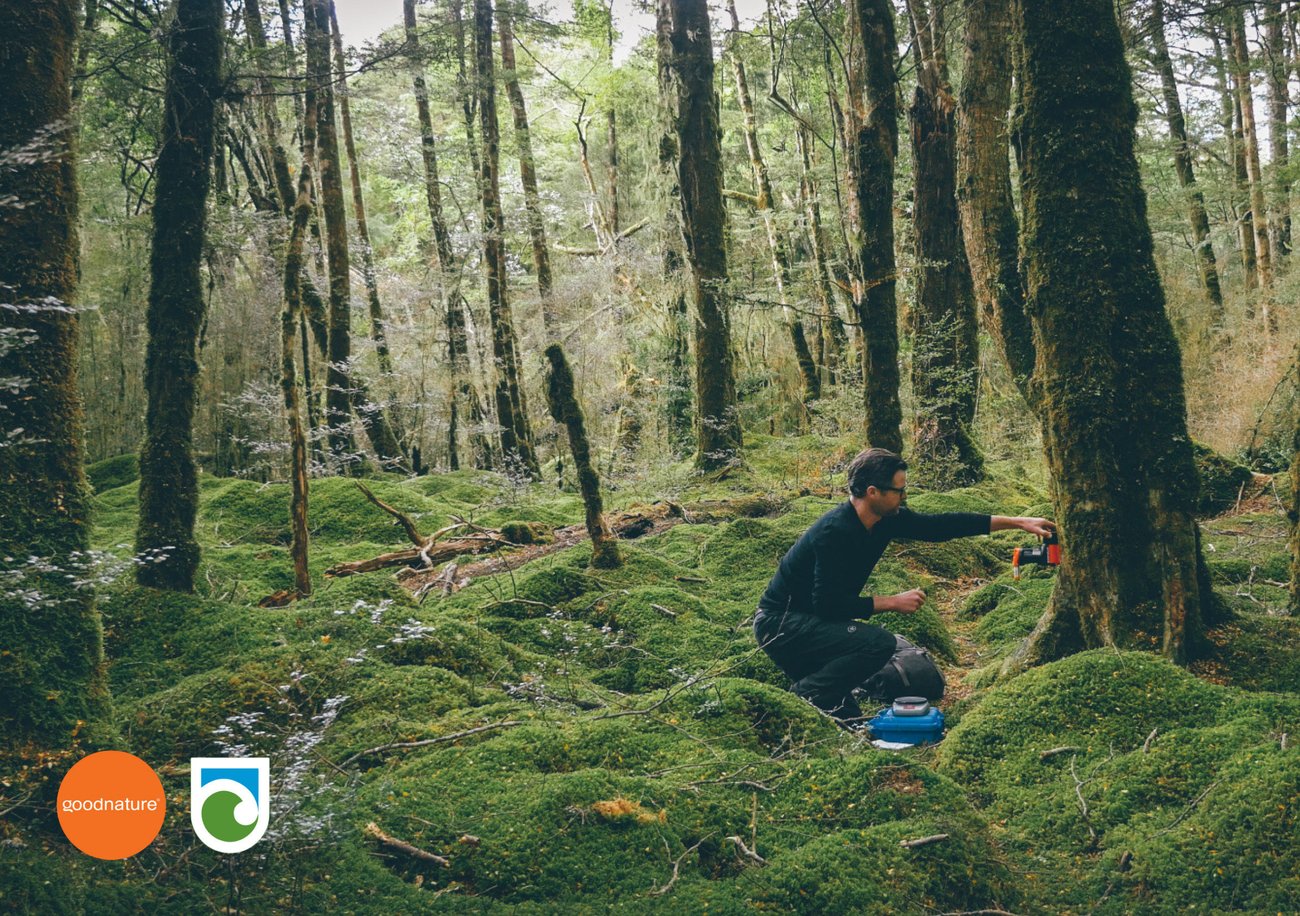Killing in the name of: Goodnature’s cleverly-designed pest traps aim to save our native critters

In New Zealand, conservation sometimes means killing animals rather than saving them. So when three university friends got together and thought about how they could get rid of more furry little predators in a humane way, they were onto something that was both good for them, and great for the planet.
The Goodnature story starts humbly, ten years ago, when three mates joined forces to work out how to use their industrial design degrees to start a business. Now, Robbie van Dam, Craig Bond and Stu Barr run a world-leading company making traps to humanely kill predators like rats and possums, saving New Zealand’s native birds.

Last year, Goodnature became profitable and the company has recently begun exporting its traps overseas.
It all started when the trio were studying together at Victoria University. Van Dam got a part-time job working at the Department of Conservation, where he volunteered laying traps for pests – carting giant wooden boxes with huge steel traps in them into the bush on his back. The traps were heavy, sometimes inhumane, and had to be manually reset.

Realising design could help make the trapping process more efficient, he enlisted the help of friend Bond and they set about coming up with 100 ways to kill a rat.
They got together with Barr and, by 2007, the trio had signed a partnership with DOC for the department to part-fund development of a self-resetting, humane trap for rats and stoats, and then possums. But it wasn’t until an experience half a world away in 2008 that Goodnature really focused its business-model.

Robbie van Dam, Craig Bond and Stu Barr.
Up until then, the trio had dabbled with making furniture, and were even invited to exhibit at a Milan Furniture Fair in Italy that year. But that was also the site of an epiphany: selling furniture wasn’t as satisfying as working in conservation.

“It had a deep value to it,” Barr says. “It wasn’t just making bullshit for rich people it was making a really meaningful product needed for the future of New Zealand. We thought that it could sustain itself and it could be made into a business that could, year-on-year, keep itself alive.”


They’ve since designed and patented the revolutionary A24 and A12 traps – mechanisms that kill rats and possums humanely, and then reset themselves, and continue to innovate in the world of lures and traps.
As it turned out, Goodnature was ahead of the curve. Barr remembers talking to managers at DOC about the company’s dreams to make the North and South Islands predator-free.

“They said ‘You’re just idealistic youngsters’, and only ten years later the government announced its goal to be predator free by 2050. Everything’s completely changed. It’s just exploding.”
The government’s recent announcement that it would be aiming to eradicate rats, stoats and possums from New Zealand by 2050 marks a huge shift in the conservation market.
When certain hugely effective poisons for killing pests were discovered in the ‘80s, trap innovation went out of vogue. “Massive companies that had big R&D arms reduced them and started a race to the bottom,” Barr says.
“And of course now that’s been shown to not to be a sustainable way to [eradicate pests].”

Goodnature’s traps are now used in New Zealand by DOC, local and regional councils, community groups and individual consumers.
One-third of the traps are sent overseas, and Goodnature is pushing strongly into international markets. It has distributors set up in Denmark, the UK, France, and Australia, selling traps around the globe.
While profit might seem like a dirty word in the conservation world, Goodnature is more on the social enterprise side of things. Becoming profitable allows it to fund further growth, research and innovation to rid the world of pests. Last year, Goodnature spent a quarter of its yearly revenue on R&D, while dedicating a third of its staff to innovation.
While the company has grown from three people to 18, Barr likes to measure their growth on other scales. “We had one printer when it was three of us, now we have six black-and-white and a colour. I remember the day we got a pallet jack. And we now have a company barbecue.”
And the company has business plans for the next one, five, 50 and 200 years, too. “We daydream about the drone that spies over the forest and is heat sensitive, and drops the trap that works for three years without human intervention,” Barr says. “It only seems about as ridiculous as a resetting trap did ten years ago.”
He thinks back to when he was a kid, when being nuclear free was the thing that bound us together as Kiwis. Nowadays, it’s being pest free and protecting the environment.
“Maybe when we talk next,” Barr says wistfully, “you won’t be able to hear me over the birdsong.”




